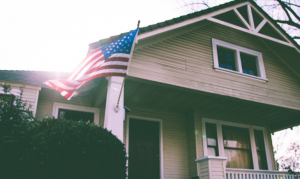
When white and black families in the United States have the same household income, the white family is likely to be in the more affluent neighborhood, a new study shows.
As a result, middle-income black and Hispanic households are much more likely to live in poor neighborhoods than whites or Asians who earn the same amount of money.
The findings raise serious questions about equal access and diversity in neighborhoods across the United States.
The disparities occur at every rung on the income ladder. A black household with an annual income of $50,000, for example, lives on average in a neighborhood in which the median income is $42,579. A typical Latino household with the same income lives in one only slightly better.
But white households with exactly the same income will on average live in neighborhoods where the median income is almost $53,000—about 25 percent higher.
Among black and white households with incomes of $100,000, the neighborhood affluence gap is 20 percent.
Double disadvantage
Comparable disparities occur among poor families. A very poor white household with an annual income of $13,000 lives on average in a neighborhood where the median income is $45,000–40 percent higher than in the typical neighborhood of a black family with the same income.
That creates what the Stanford researchers call a double disadvantage for children in the poorest black and Hispanic families. Not only do they grow up in families that have lower incomes; they also are more likely to be in neighborhoods with fewer social supports, weaker school systems, and more obstacles than the neighborhoods of their white counterparts.
The study is one of 17 articles published in the July issue of the Annals of the American Academy of Political and Social Science, which focuses on residential inequality. It was conducted by Sean Reardon, a professor at the Stanford Graduate School of Education, and Stanford doctoral students Lindsay Fox and Joseph Townsend.
“It’s relatively well known that black families on average live in poorer neighborhoods, but a lot of people presume that’s simply because black families are poorer,” says Reardon. “But if that were all there was to it, you would find poor whites living in the same kinds of neighborhoods as poor blacks.
“What we found, however, was that even blacks who have the same household incomes as whites live in poorer neighborhoods.”
Nationwide, black families typically live in neighborhoods where the median income is consistently $10,000 to $12,000 lower than in the neighborhoods where similar-income white families live, according to the study. For Hispanic households, the difference is between $6,000 and $8,000. In many large metropolitan areas, the neighborhood differences are two to three times larger.
Segregation in America
The study also examined the racial composition of neighborhoods where families of different income levels live. Other studies have found that residential racial segregation has declined modestly over the past several decades, while income segregation has risen sharply.
The Stanford researchers do not dispute those findings. But they say that racial segregation remains very high, and conclude that one’s race remains far more important than one’s income in determining the composition of the neighborhood where one lives.
White households, whether rich or poor, typically live in neighborhoods that are more than 80 percent white. Black and Latino families, regardless of their income levels, typically live in neighborhoods that are disproportionately non-white.
Even among families with the same income, Americans remain highly racially segregated.
3 reasons why
The authors note that their study does not investigate why racial segregation remains so pervasive. But they cite previous research that points to three likely causes. The most obvious is racial discrimination in the housing market, despite laws barring such behavior.
A second is the disparity in accumulated wealth, such as cash savings, retirement accounts, and home equity. More than half of all black households, including many with solid incomes, have less than $15,000 in accumulated wealth. A third reason involves the preference of many people to live near others of the same race or ethnicity.
Regardless of the precise causes, says Reardon, the combined impact of racial segregation and income segregation poses troubling obstacles to upward mobility, particularly for children from low-income and minority families. Because of the neighborhood affluence gap, for instance, black and Hispanic children are unlikely to have access to the same educational opportunities as their white and Asian peers.
“Our work complements a compelling new body of research showing that growing up in a very poor neighborhood lowers children’s chances of going to college, lowers their earnings, and increases the odds that they will become single parents,” he says.
“When you look at the evidence of how important neighborhoods are, you really worry about the long-term consequences of these patterns of racial and economic segregation.”
The study is based on data obtained from the census and the American Community Survey. The researchers devised new statistical techniques that enabled them to analyze the average racial composition and income distributions of neighborhoods across the United States. While the study’s conclusions focus on national trends, the researchers noted that the patterns vary somewhat by metropolitan area; they hope to post more localized results later this year.
Source: Stanford University








